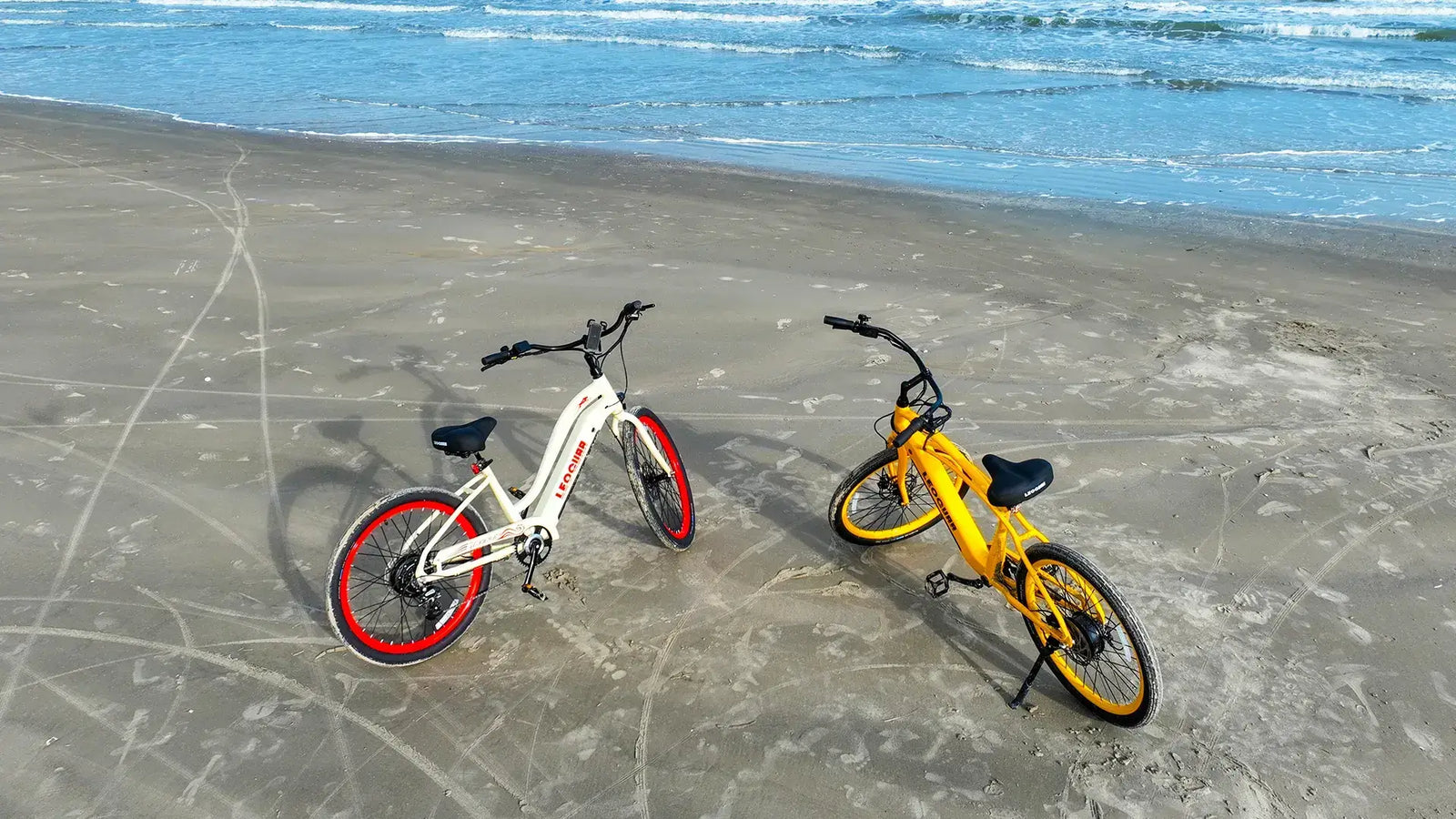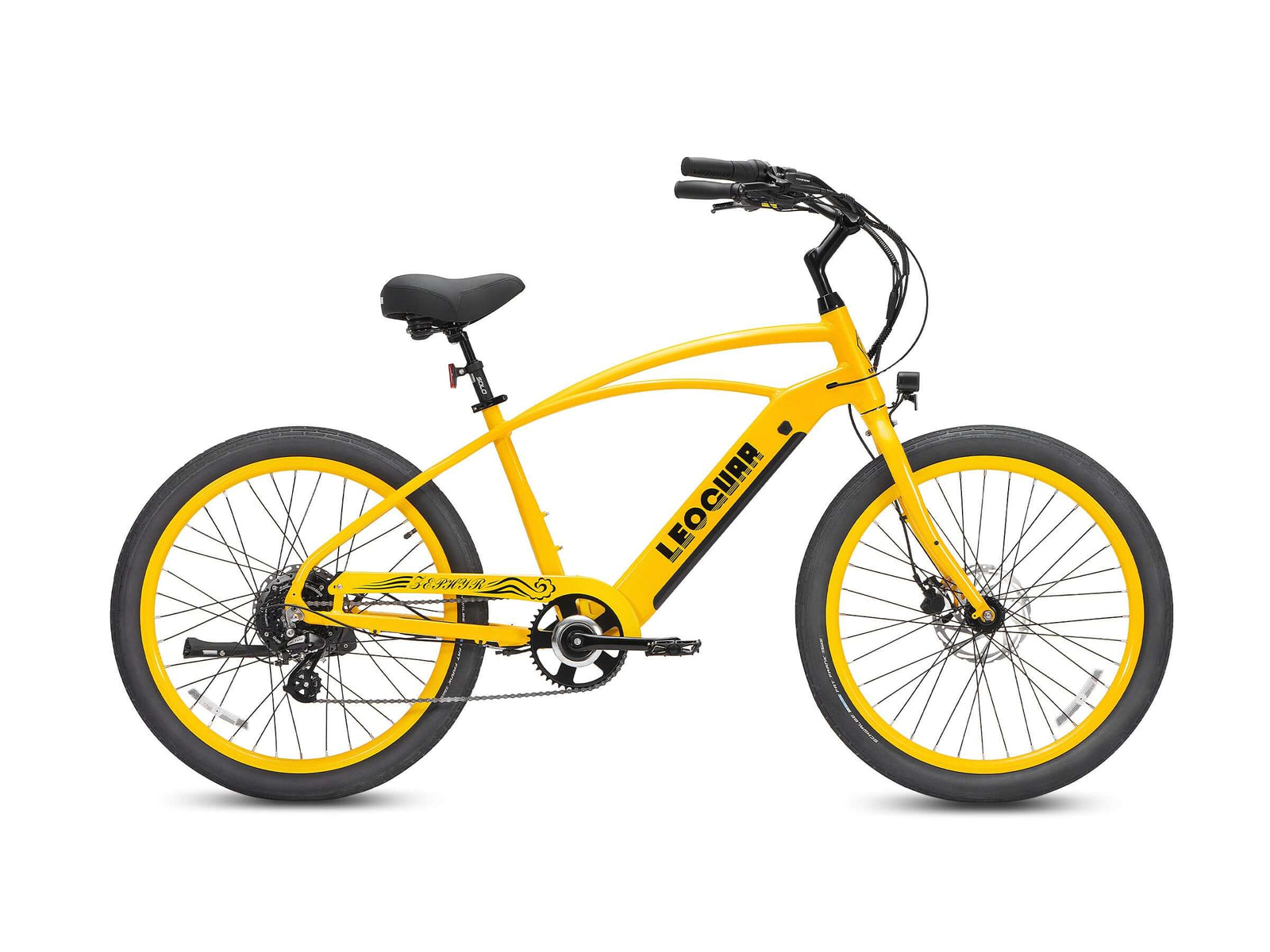
How Fast Can a 500W eBike Go? Here’s What You Should Expect
When you ask how fast a 500W e-bike can go, the simple answer is that it can reach speeds between 20 to 28 mph. However, this basic number doesn't tell the whole story about what you can expect from your ride.
The speed you see on your bike's display comes from several factors working together. These include the motor's power, legal rules, how hard you pedal, and where you're riding. The real question isn't just about the top speed number.
It's about what that speed and power feel like when you're actually riding. Will it help you get up the hills on your way to work? Can it keep up with cars in the city? Is it the right amount of power for what you need? Our goal is to go beyond the basic facts and give you a complete picture of how a 500W e-bike performs in real life.
Understanding eBike Classes
Before we talk about performance, you need to know the legal rules that control e-bike speeds in the United States. Companies limit the top speed of their bikes electronically to follow a three-class system. This is the biggest reason why most 500W e-bikes are capped at either 20 or 28 mph. Understanding these classes helps you know what to expect when you buy a new bike.
Most 500W e-bikes are sold as either Class 2 or Class 3. This classification decides the maximum speed at which the motor will help you. According to groups like PeopleForBikes, which tracks e-bike laws in the U.S., this system creates clear rules for riders and lawmakers. Here's a simple breakdown of the e-bike classes:
| Class | How it Works | Max Assisted Speed |
|---|---|---|
| Class 1 | Pedal-assist only. The motor helps only when you are pedaling. | 20 mph (32 km/h) |
| Class 2 | Throttle and pedal-assist. The motor can propel you without pedaling. | 20 mph (32 km/h) |
| Class 3 | Pedal-assist only. The motor helps only when you are pedaling. | 28 mph (45 km/h) |
A Class 3 e-bike may also have a throttle, but the throttle help is legally required to stop at 20 mph.
Seven Factors That Control Speed
While the e-bike class sets the speed limit, the motor's 500 watts of power is what gets you there. Think of the wattage as the engine's potential. However, several other factors decide how quickly you reach that limit and how well you can maintain it. Let's break them down.
Rider and Cargo Weight
Physics is simple: more weight requires more energy to move and to speed up. A 150 lb rider will find it easier to reach and maintain top speed compared to a 220 lb rider with 30 lbs of groceries. The 500W motor has enough power for heavier loads, but your speed-up will be slower and your battery will drain faster.
Terrain and Hills
This is where a 500W motor really shines compared to weaker 250W or 350W motors. On a flat, paved bike path, you can cruise at the speed limit with little effort. Add a 5-10% grade hill, and your speed will naturally drop. While a weaker motor might slow to a crawl, a 500W motor has the torque to help you maintain a decent 10-15 mph up the hill without wearing yourself out.
Wind Resistance
Wind is like an invisible hill. A strong headwind can easily slow you down by 5 mph or more. This is another time when you'll be glad for the 500W motor. It gives the steady power needed to push through the resistance. On the flip side, a tailwind can make it feel like you're flying, helping you reach the motor's cutoff speed with very little effort. Your riding position also matters since an upright position creates more drag than leaning forward.
Tire Pressure and Type
Your tires are the bike's only connection to the road, and they play a big role in how well your bike performs. Bumpy, wide fat tires are great for grip on loose surfaces but create more resistance on pavement, slightly reducing top speed and range. Smoother, narrower tires inflated to the right PSI will roll with much less effort. Keeping your tires properly inflated is one of the easiest ways to get the most speed from your bike.
Battery Level
Your e-bike's battery management system is designed to protect the battery. As the charge level drops, especially below 20-25%, the system may slightly reduce the power output to save the remaining charge and protect the battery cells. While you may not notice a big drop, you might find that speed-up is a little less punchy when the battery is nearly empty.
Your Pedaling Power
On a pedal-assist e-bike, you are part of the engine. The speed you reach is a mix of motor power and your own human power. If you are in a low-assist mode and pedaling lightly, you might cruise at 15 mph. Shift to a higher-assist level and pedal with more force, and you'll easily push toward the 28 mph limit of a Class 3 bike. The 500W motor is there to boost your effort, not completely replace it.
Motor Type and Design
Not all 500W motors are created equal. The two main types are hub drives and mid-drives. A 500W rear hub motor is simple, reliable, and gives a pushing feeling. It's excellent for flat ground and general commuting. A 500W mid-drive motor is positioned at the bike's pedals.
Its key advantage is that it can use the bike's gears. This means on a steep hill, you can shift to a lower gear, allowing the motor to spin at its best RPM. This makes mid-drives feel more powerful and efficient on climbs, even with the same 500W rating as a hub motor.
Real-World Riding Examples
To bring all these factors together, let's imagine a few real-world rides. We'll put an average 180 lb rider on a typical 500W Class 3 e-bike and see what happens.
The Smooth Commute
On a flat, paved bike path with no wind, our rider wants to get to work quickly. Expected Speed: 22-28 mph. The Feel: With pedal assist on a medium-to-high setting, it's easy to get up to speed. Maintaining 25 mph feels like a good workout, not a strain. The motor does the heavy lifting, allowing the rider to arrive at their destination quickly and without breaking a sweat.
City Riding
Here, our rider is dealing with stop signs, traffic lights, and other vehicles. Top speed is less important than speed-up and being able to move easily. Expected Average Speed: 15-18 mph. The Feel: The 500W motor gives a satisfying and safe burst of speed from a standstill, helping the rider get ahead of traffic at intersections. The bike feels powerful and responsive, making stop-and-go riding much less of a chore.
Climbing a Moderate Hill
Our commuter faces a quarter-mile-long hill with a 7% grade. Expected Speed: 12-15 mph. The Feel: This is where the 500W motor proves its worth. Instead of standing on the pedals and gasping for air, our rider can remain seated, pedaling at a steady pace. The motor takes the burn out of the climb, turning a major obstacle into a minor inconvenience. A 250W motor would struggle here, likely dropping to a walking pace.
Fighting a Headwind
A steady 15 mph headwind has kicked up on the way home. Expected Speed: 15-17 mph. The Feel: On a regular bike, this would be a tough, soul-crushing ride. On the 500W e-bike, the rider can maintain a steady pace without feeling like they're fighting a losing battle. The motor's help effectively cancels out the wind's resistance, making the ride predictable and enjoyable.

Comparing Motor Power
To truly understand where 500W fits, it helps to compare it to other common motor sizes. Speed is often legally capped, so the real difference lies in speed-up, hill-climbing ability, and the overall feel of the power.
| Motor Wattage | Typical Top Speed | Acceleration | Hill Climbing Feel | Best For |
|---|---|---|---|---|
| 250W | 15-20 mph | Gentle & smooth | Provides assistance, but requires significant rider effort on steep hills. | Flat terrain, lightweight riders, areas with strict power limits. |
| 500W | 20-28 mph | Brisk & confident | Flattens most moderate hills and makes steep hills manageable. | All-purpose commuting, recreational riding, hilly areas, carrying moderate loads. |
| 750W | 20-28+ mph | Quick & powerful | Powers up steep grades with ease, often feeling effortless. | Heavier riders, hauling cargo, off-road use, riders wanting maximum power. |
The 500W motor is often considered the sweet spot for most riders in the US. It offers a big, noticeable upgrade in power and hill-climbing ability over a 250W motor. It gives that exciting feeling of quick speed-up without being as aggressive as a 750W motor.
Is 500W Enough Power?
This is the ultimate question for someone thinking about buying an e-bike. After considering all the factors, we can confidently say that for most people, a 500W e-bike is more than enough power.
A 500W motor is likely perfect for you if you are a daily commuter who faces moderate hills or wants to keep up with traffic. You are a recreational rider who wants to explore longer routes without worrying about getting tired. You plan to carry light-to-moderate loads like groceries or a child in a safety seat. You want a bike that feels powerful and responsive but is still easy to control.
You might want to consider a 750W motor if you are a heavier rider or regularly carry very heavy cargo. Your commute includes very steep or long hills. You primarily ride off-road on challenging terrain. You are a performance enthusiast who simply wants the fastest speed-up available.
Frequently Asked Questions
1. Can a 500W e-bike go 30 mph?
Out of the box, it's highly unlikely. Most 500W e-bikes are legally limited to 28 mph for Class 3 or 20 mph for Class 2. While you might be able to exceed this limit by pedaling hard downhill, the motor will stop providing assistance at its programmed cutoff speed.
2. How does a 500W motor handle hills?
Very well. A 500W motor provides enough torque to make climbing most urban and suburban hills feel easy. You will still need to pedal, but the motor takes the strain off, allowing you to maintain a good speed without getting winded. It's a significant improvement over 250W or 350W motors in hilly terrain.
3. Will a 500W motor drain the battery quickly?
It depends on how you use it. If you rely heavily on the throttle or constantly use the highest pedal-assist level, you will drain the battery faster than you would with a 250W motor. However, if you ride in lower-assist modes and pedal along, a 500W e-bike with a standard-sized battery can still provide an excellent range of 30-60 miles or more.
4. What's the difference between hub drive and mid-drive 500W motors?
Hub drive motors are simpler and provide a pushing sensation from the rear wheel. Mid-drive motors are positioned at the pedals and can use the bike's gears, making them more efficient on hills. Both have 500W of power, but mid-drives typically feel more natural and powerful when climbing.
5. How fast can a 500W ebike go compared to regular bikes?
A 500W e-bike can maintain 20-28 mph with motor assistance, which is significantly faster than most people can sustain on a regular bike. While experienced cyclists might reach similar speeds for short bursts, the e-bike allows you to maintain these speeds consistently with much less effort, especially on hills and against headwinds.









































Leave a comment